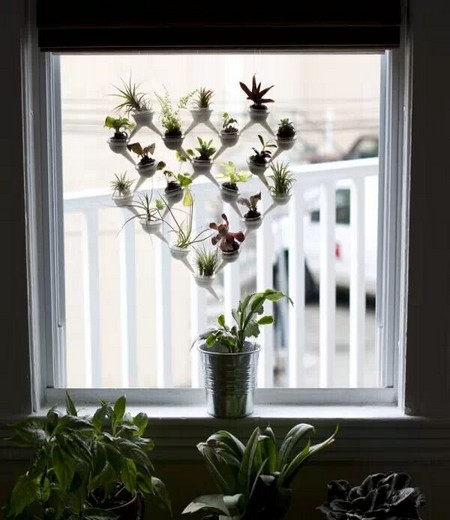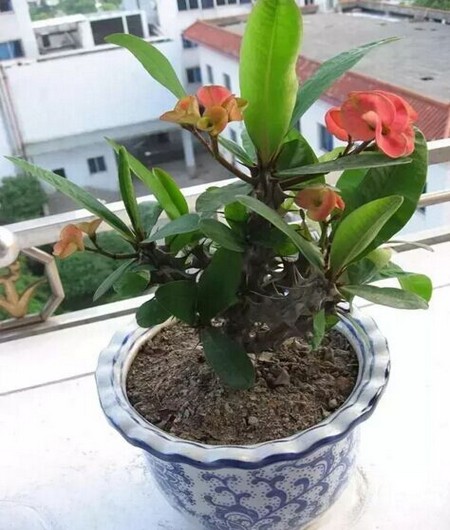Pearl Boxwood Bonsai Conservation Management Skills
As an endangered and precious tree species endemic to China, due to the influence of natural conditions, tree species characteristics and man-made destruction and other factors, the distribution range and growth quality of wild population are weakening year by year. It should be our common idea to protect and cultivate natural resources and realize the sustainable development of ornamental plant industry.

After nearly 18 years of domestication and selective cultivation, Pearl Yellow Poplar has experienced the process from high mountain to mountain foot and then to plain, from fine to extensive in cultivation method, and completely adopted the cultivation mode under open-air natural conditions. it has withstood the tests of winter ice and snow, summer sun, rain, waterlogging and drought, and has strong adaptability.
Its tree species characteristics, growth trend, stress resistance and cultivation techniques are obviously different from those of wild Populus tomentosa. Long-term and a large number of cultivation experiments under extreme conditions show that it is not difficult to maintain the normal growth state for the conservation and management of Populus tomentosa potted plants as long as we master some key points which are basically similar to other trees.
1. Placement and protection-proper lighting
Pearl yellow poplar is a shade-loving tree species, and it is better to put it indoors in a place of ventilation and light transmission. Under the condition of high temperature and humidity in summer, it is best to choose morning and evening and rainy days, which should be placed outdoors or on the balcony. Long-term shade and poor ventilation can easily make the branches and leaves of the plant weak. Pearl yellow poplar has strong cold resistance and can withstand the severe cold of about 20 degrees below zero, but the plants sprouting new branches in late autumn or early spring should pay attention to heat preservation, which should be placed indoors to prevent frost injury.
Secondly, the leaves of Populus tomentosa have different colors in the four seasons, and more light in the dormant period can make the leaves turn red, otherwise they will remain green.
2. Put it on the pot-avoid summer exposure
Pearl yellow poplar can be carried out in four seasons, and the plant dormancy period or Meiyu period is the best. The soil on the basin is mainly humus soil, paddy soil or mountain mud, and the soil should be slightly acidic, neutral or slightly alkaline. If you are not satisfied with your local soil, you can mix the soil with 1/3 orchid soil or vermiculite, peat and so on. At the same time, a small amount of bean cake or bean chips can be properly added to the soil, allowing it to be fermented and volatilized in the soil to become a late-acting nutrient, so that the plant can benefit slowly. The root system of the plant planted in the ground is very well developed. when you go to the pot, you can cut off part of the main root, and if you have too many whisker roots, you can also remove some of them. Don't huddle in the basin. When potting, first fix the sieve or tile at the bottom hole of the flowerpot, then put in the plant, fill in the culture soil and pour through the water. After changing the basin in summer, it should be placed in a cool and ventilated place at first. More light should be given in spring and autumn.
3. Watering-if you don't dry or water, you will water thoroughly.
Watering is the main measure for pot conservation of Populus tomentosa. The plant should be fully watered or soaked in water after potting, and the principle of no drying, no watering and watering (soaking) can be grasped later. The so-called dry means that the surface of the soil begins to be dry-white rather than thoroughly dry.
When trees are planted in pots, the soil is always limited and the water content is limited. If there is no water replenishment for a long time, the trees will lose their leaves and even wither due to lack of water. Generally speaking, when pearl boxwood is placed indoors, watering does not need to be too frequently, if the watering is too frequent, the basin soil is too wet for a long time, and lack of ventilation and sufficient light, it is easy to cause root hypoxia and rot; at the same time, the frequency of watering should be determined according to seasonal changes, cold and warm weather and soil permeability. Watering can be foliar spray, can also be root irrigation or even basin soaking for a few minutes, pay attention not to pour "half of the water" to cause the basin surface wet, the basin dry phenomenon. If it is inconvenient to water frequently when going out, depending on the size of the flowerpot, use 2-3 cotton yarns or wool to pierce one end into the basin from the bottom hole, and dip the other end into the basin, cup or other container to supply water according to the self-priming principle of water. Water evaporation is slow in winter, soak in 1-2 roots, and increase appropriately in summer, depending on the climatic conditions of your area.
4. Fertilization-light application of fine fertilizer
The soil in the pot of bonsai is limited, so the nutrients are also limited, so we should pay attention to the supplement of fertilizer. But the growth of Populus tomentosa is relatively slow, fertilization does not need too much, too frequently, and it is appropriate to apply fertilizer twice a year in early spring and autumn. The pot fertilization of Populus tomentosa is mainly nitrogen. Generally, the plants with 20cm diameter can be soaked in about 20 soybeans or bean cake and fully matured and applied to the basin soil with water.
Pay attention to the application of other liquid fertilizers should not be too thick, so as not to hurt the roots, just on the pot and newly turned plants should not be in a hurry to apply fertilizer.
5. Pruning-mastering the season
Pearl boxwood has a strong tillering ability, and there is the possibility of new buds sprouting everywhere. If it is allowed to grow naturally and unrestrained, it is bound to affect the tree posture and reduce its ornamental value. Therefore, it should be pruned in time to maintain the graceful posture and proper proportion of the tree. But remember: pruning should be carried out after the plant enters the dormant period in autumn. Except for the newly germinated twigs, pruning in the middle of summer can easily lead to slight atrophy of the branches.
Heart-picking: for branches that grow too fast, in order to restrain their high growth and promote the development of lateral skills, the tender tips can be removed.
Removal of buds: for older plants, some bead-shaped buds are often produced on the branches or ends after August-September of each year. If there are too many buds, they should be picked off at any time and kept at the end of the branches to enjoy the flowers. This can avoid consuming too many nutrients and ensure the luxuriant branches and leaves of the plant.
Pruning: Pearl boxwood often produces new branches on the dry base. In order to maintain its beautiful appearance, attention should be paid to the proper removal. The way of trimming should be determined according to the shape of the tree. if it is a cloud shape, the branches should be trimmed into a flat shape. Generally speaking, withered branches, parallel branches and cross techniques that hinder beauty should be cut off.
6. Turn the basin-there is no need to work too often
The root system of Populus tomentosa is well developed, and the germination of the new root is very strong after pruning. After growing in the basin for a year, the whisker root can cover the bottom of the basin. If you do not turn the basin and trim the old roots for several years, the watering is difficult to permeate and drain, and the fertilizer is not easy to absorb, which will affect the normal growth of the plant, so you should consider turning the basin and changing soil. Turn the basin can use the original basin or change a slightly larger basin, according to the size of the tree to decide. Changing soil can improve the ventilation and permeability of soil, increase soil nutrients, benefit the healthy growth of plants and improve the ornamental effect. Pruning old roots can promote the germination of new roots, improve root activity and facilitate nutrient absorption.
The soil and method used to change the basin of Pearl Yellow Poplar is roughly the same as that of the upper basin, and the turning time can be determined according to the following aspects:
Generally, miniature bonsai is turned every 1-2 years, medium bonsai is turned once in 2-3 years, and large bonsai is turned once in about 4 years.
Turning the basin can be decided according to the growth of the root. When the soil is not dry or wet, turn the basin upside down and beat the bottom of the basin with hands, so that all the trees with soil roots are poured out to check the soil block consolidation and root distribution. If the soil blocks are hardened and the roots are densely covered with the bottom of the soil blocks, it means that the basin must be turned over. The time of turning basin can be carried out in all four seasons, and the best choice is after the germination of new branches in early summer or the period of Meiyu.
7. Pest control-- wait till you see.
Except for the occasionally visible wild borer in spring and summer, Pearl Yellow Poplar has few other insect pests. The harmful symptom is that the local leaves turn yellow, as long as they are caught in time or sprayed with trichlorfon and other common pesticides.
According to the disease characteristics of Populus tomentosa, such as black spots on the leaves, branchlet blight and other symptoms, it may be branch blight or leaf spot. Carbendazim, Dyson Mengxin and other popular fungicides can be sprayed continuously for 4 times at intervals of 5-7 days.
Time: 2019-06-02 Click:
- Prev

Culture methods and matters needing attention of air pineapple
Air pineapple is an ornamental plant that grows in the air, which can be attached to dead wood, rock, or placed on shells or pots, and can grow as long as the roots do not accumulate water. Many foreign interior design magazines have air pineapple as an indoor plant to decorate the home, which is very fashionable. More people plant air pineapples in large quantities
- Next

The Culture method of Plum Blossom Bonsai
Prickly plum blossom, alias Panzai thorn, Pansai tree, tiger thorn, unicorn thorn, unicorn flower, iron begonia, tiger plum, are spiny erect or slightly climbing shrubs. Strong sex, like warm and dry climate, suitable growth humidity is 18-25 ℃. If the room temperature is kept above 15 ℃ in winter, it will blossom continuously throughout the winter.
Related
- Fuxing push coffee new agricultural production and marketing class: lack of small-scale processing plants
- Jujube rice field leisure farm deep ploughing Yilan for five years to create a space for organic food and play
- Nongyu Farm-A trial of organic papaya for brave women with advanced technology
- Four points for attention in the prevention and control of diseases and insect pests of edible fungi
- How to add nutrient solution to Edible Fungi
- Is there any good way to control edible fungus mites?
- Open Inoculation Technology of Edible Fungi
- Is there any clever way to use fertilizer for edible fungus in winter?
- What agents are used to kill the pathogens of edible fungi in the mushroom shed?
- Rapid drying of Edible Fungi

